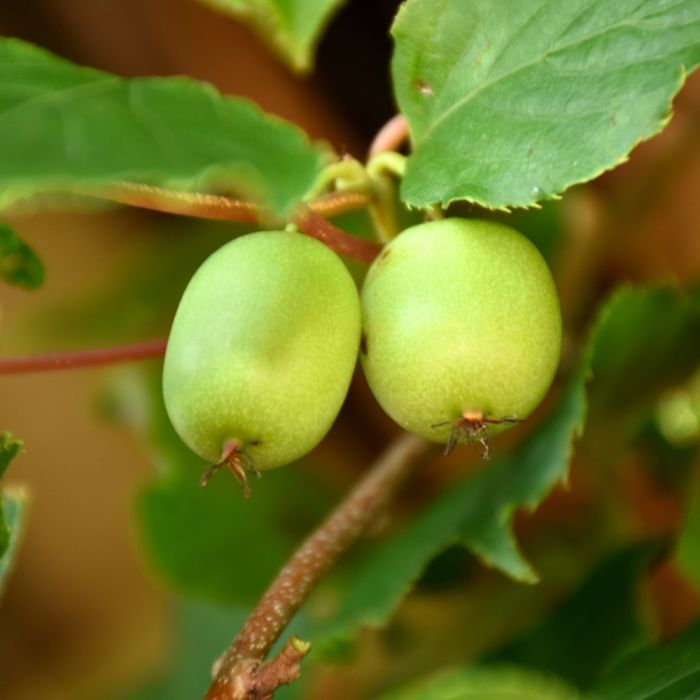Actinidia, Kiwi Vine 'Issai Kiwi'



Out of stock
Coming soon, still growing- Sun Preference
- Full-Sun, Part-Sun
- Bloom Time
- May
Description
Issai Kiwi | Actinidia arguta 'Issai'
A vigorous climbing vine selected for its delicious edible Kiwi fruit; unlike the species, does not require a male pollinator to set fruit; very hardy and adaptableMinnesota's Largest Selection of Shrubs
Elevate your landscaping with Gertens' unmatched variety of shrubs! Selecting the right shrubs for your backyard can enhance its beauty and functionality. Consider factors like sunlight, soil type, and mature size when choosing shrubs. For sunny areas, flowering shrubs like roses or hydrangeas can add color and charm. In shady spots, opt for shrubs like azaleas or hostas. Evergreen shrubs provide year-round interest and privacy, while deciduous shrubs offer seasonal color changes. At Gertens, we offer a wide selection of shrubs to suit every backyard need.
Details
Issai Kiwi is a woody vine that is commonly grown for its edible qualities, although it does have ornamental merits as well. It produces small green oval fruit which are usually ready for picking from early to mid fall. The fruits have a sweet taste.
The fruit are most often used in the following ways:
- Fresh Eating
Issai Kiwi features dainty fragrant white buttercup flowers with yellow anthers along the branches from mid to late spring. It has dark green deciduous foliage. The large oval leaves turn yellow in fall. It features an abundance of magnificent green berries in early fall.
This is a dense multi-stemmed deciduous woody vine with a spreading, ground-hugging habit of growth. Its relatively coarse texture can be used to stand it apart from other landscape plants with finer foliage. This is a high maintenance plant that will require regular care and upkeep, and requires a special pruning regimen to reliably produce fruit; consult a specific reference guide or contact the store for proper pruning techniques. It has no significant negative characteristics.
Aside from its primary use as an edible, Issai Kiwi is sutiable for the following landscape applications;
- Hedges/Screening
- General Garden Use
- Orchard/Edible Landscaping
Issai Kiwi will grow to be about 40 feet tall at maturity, with a spread of 24 inches. As a climbing vine, it should be planted next to a fence, trellis or other rigid structure where it can be trained to grow upwards on it. It grows at a fast rate, and under ideal conditions can be expected to live for approximately 15 years. This is a self-pollinating variety, so it doesn't require a second plant nearby to set fruit.
This woody vine can be integrated into a landscape or flower garden by creative gardeners, but is usually grown in a designated edibles garden. It does best in full sun to partial shade. It prefers to grow in average to moist conditions, and shouldn't be allowed to dry out. It is not particular as to soil type or pH. It is highly tolerant of urban pollution and will even thrive in inner city environments. This is a selected variety of a species not originally from North America.
More Information
| Gerten Grown Plants | Gerten Grown Plants |
|---|---|
| Available for Pre-Order | No |
| Bloom Time | May |
| Sun Preference | Full-Sun, Part-Sun |
| Mature Height (Range) | 15 - 25 feet |
| USDA Hardiness Zone | 5, 6, 7, 8, 9 |
| Common Family Name | Kiwi Vine |


